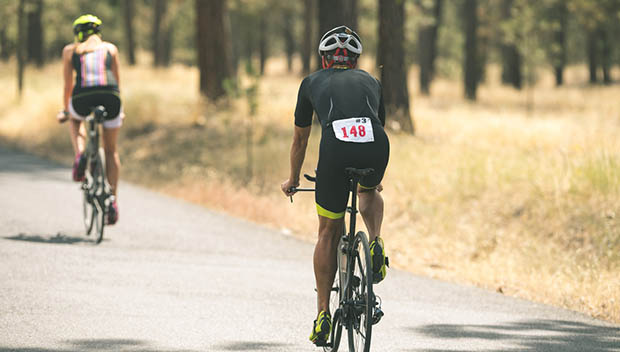
Triathletes understand the importance of recovery. They're just not very good at following through with it.
Perhaps, it's part of the triathlete psyche.
The trait that gets triathletes out the door to swim 3,000 meters or run eight miles in the wee hours of the morning is the same quality that makes it difficult for them to sit still and take some time off—even if it's just for a day.
Like sharks, triathletes have to keep moving. Recovery, on the other hand, just seems so stationary.
Recovery doesn't have to entail just staying off your feet and wearing compression tights or socks, getting a massage, plunging in an ice bath or soaking in a hot tub.
You can also recover actively by taking advantage of slower and/or shorter workouts to focus on various aspects of your swim, bike, run—and the transitions between them—that often get neglected during your harder training efforts.
Triathlon Events Near You
Hone Your Technique and Skills
If you follow a periodized training plan, recovery days and weeks usually feature shorter, slower-paced workouts—perfect for working on your form, technique and skills in all three triathlon disciplines.Instead of slowly putting in distance at an aerobic pace during recovery swims, add purpose to them by using the slower pace to focus on your "feel" for the water. Work on your body position and rotation, hone your stroke technique, strengthen your kick and—if you're relatively new to swimming—practice bilateral breathing and sighting skills.
Easy recovery rides help flush the legs, but they can also be a good time to practice your bike handling skills and form.
More: The Benefits of Swim-Run Workouts
Being a strong cyclist is about more than speed and power; it's about being efficient and confident on the bike. Instead of concentrating on heart rate, power or speed during your recovery rides, focus on riding your bike in the straightest line possible.
If traffic and safety permits, seeing how long you can ride the white shoulder line on the road without slipping to either side is a good way to practice straight-line riding) and keeping your upper body "quiet" in the saddle.
Work also on your cornering skills, practice descending and climbing, hone your pedaling technique, practice efficient shifting, and perfect your mounts and dismounts.
In running, the slower pace of recovery runs are perfect for working on your foot-strike, running posture and overall form. Practice staying loose as well, keeping your hands, face and shoulders relaxed.
More: 4 Ways to Avoid the Bike-Run Bonk
Work on Fast and Efficient Transitions
Recovery days are also perfect for practicing your transitions (swim-to-bike, bike-to-run) and working on ways to cut down on time. Note that these are not brick or transition workouts. Your focus here is strictly on transitioning. The best place to practice your transitions is in an empty parking lot.For swim-to-bike transition "workouts," set up your bike like you would in the transition area and practice running a short distance (100 to 200 yards) in your wetsuit while removing your cap and goggles, unzipping your wetsuit and pulling it down around your waist.
Practice removing your wetsuit and getting onto your bike as quickly as possible. Set time goals and try to meet them and then beat them. Also, fine-tune your transition set up by working on the most efficient way to lay out your bike shoes, helmet, glasses etc. that help shave seconds off your transition time.
For bike-to run-transitions, ride a few laps around the parking lot and then work on transitioning quickly from the bike to the run. Again, set time goals and try to meet or beat them.
More: 4 Triathlon Transition Videos
If you really want to work on shaving time off your T2, practice removing your feet from your bike shoes while you're still moving on the bike and your shoes are clipped into your pedals.
If your bike handling skills are up to par, you may also want to work on flying dismounts (dismounting the bike while it's still moving and breaking into a run).


